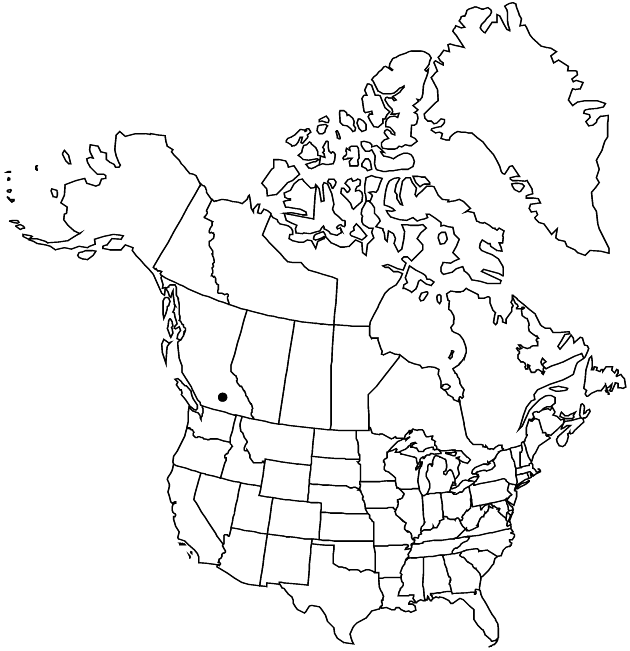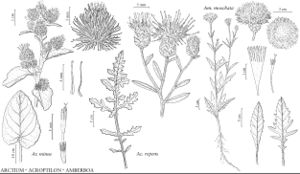Amberboa moschata
in A. P. de Candolle and A. L. P. P. de Candolle, Prodr. 6: 560. 1838.
Stems with slender branches. Leaf-blades oblanceolate, 10–25 cm, margins dentate to lyrate-pinnatifid; cauline blades linear to lanceolate, margins dentate to pinnately dissected into linear-lanceolate segments. Heads long-pedunculate, ca. 5 cm diam. Involucres thinly hairy. Phyllaries green, rounded, outer scarious-margined, inner with oblong, scarious appendages. Florets fragrant; outer conspicuously expanded, many lobed. Cypselae dark-brown, 3.5–4 mm, glabrous; pappus-scales 3.5–4 mm. 2n = 32 (from cultivated material).
Phenology: Flowering winter–early summer (Jan–Jul).
Habitat: Escaped or persistent from cultivation in disturbed sites
Elevation: 0–1200 m
Distribution

Introduced; B.C., c Asia
Discussion
British Columbia is cited on the basis of a 1936 collection from ballast in Vancouver. Amberboa moschata has been reported from California, Illinois, Indiana, Iowa, Maine, and Utah; I have not seen specimens from those states.
Amberboa moschata has been cultivated as a garden ornamental since the 1600s. It occasionally grows as a casual garden escape in the United States and southern Canada. Wild forms of Amberboa moschata from Turkey and Armenia are described (E. Gabrielian and C. E. Jarvis 1996) as having pink or lilac marginal flowers, and a closely related species A. amberboi from central Asia as yellow-flowered. Corollas in garden forms are white, pink, purple, or yellow.
Selected References
None.
Lower Taxa
"fine" is not a number.
